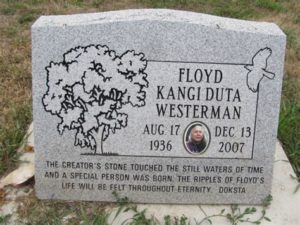 On this day in 1870, post-romanticist poet and writer, also a playwright, literary columnist, and artist, Gustavo Adolfo Bécquer died from tuberculosis in Madrid at the age of 34. Born Gustavo Adolfo Claudio Domínguez Bastida on February 17, 1836 in Seville. In my opinion, one of the most important figures in Spanish literature. He adopted the alias of Bécquer as his brother Valeriano Bécquer, a painter, had done earlier. It was after his death that most of his works were published. Perhaps his best known works are the Rhymes and the Legends, usually published together as Rimas y leyendas. These poems and tales are essential to the study of Spanish literature and common reading for high-school students in Spanish-speaking countries.
On this day in 1870, post-romanticist poet and writer, also a playwright, literary columnist, and artist, Gustavo Adolfo Bécquer died from tuberculosis in Madrid at the age of 34. Born Gustavo Adolfo Claudio Domínguez Bastida on February 17, 1836 in Seville. In my opinion, one of the most important figures in Spanish literature. He adopted the alias of Bécquer as his brother Valeriano Bécquer, a painter, had done earlier. It was after his death that most of his works were published. Perhaps his best known works are the Rhymes and the Legends, usually published together as Rimas y leyendas. These poems and tales are essential to the study of Spanish literature and common reading for high-school students in Spanish-speaking countries.
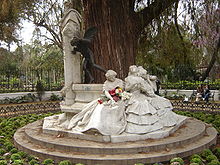
Glorieta de Bécquer in Seville, Spain
In 1861, Bécquer met Casta Esteban Navarro, and married her in May 1861. Bécquer was believed to have had a romance with another girl named Elisa Guillén shortly before the marriage, which is thought to have been arranged, by the parents of Casta. The poet was not happy in the marriage, and took any chance he got to follow his brother Valeriano on his constant trips. Casta began to take up with a man with whom she had had a relationship shortly before marrying Bécquer, something that was later blamed on Bécquer’s trips and lack of attention by Casta’s acquaintances. The poet wrote very little about Casta, as most of his inspiration at this time, (as it is the case with the famous rima LIII), came from his feelings towards Elisa.
Rhymes (Rimas)
|
Volverán las oscuras golondrinas Pero aquellas que el vuelo refrenaban |
The dark swallows will return But those who used to slow their flight |
The refrain “¡Esas… no volverán!” appears in the 20th novel Yo-Yo Boing! by Latina poet Giannina Braschi, who references Bécquer’s swallows to describe the sorrow and angst of a failed romance.
In Rhymes (Rhyme 21) Becquer wrote one of the most famous poems in the Spanish language. The poem can be read as a response to a lover who asked what was poetry:
|
¿Qué es poesía?, dices mientras clavas |
What is poetry? you ask, while fixing |
The Final Footprint
His body was buried in Madrid, and afterwards was moved to Seville along with his brother’s at Capilla de la Universidad de Sevilla.
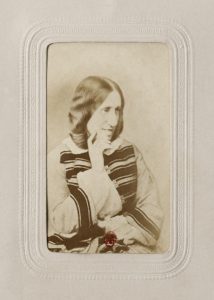 On this day in 1880, novelist, poet, journalist, translator and one of the leading writers of the Victorian era, George Eliot died at the age of 61 in Chelsea, Middlesex, England. Born Mary Ann Evans on 22 November 1819 in Nuneaton, Warwickshire, England. She is the author of seven novels, including Adam Bede (1859), The Mill on the Floss (1860), Silas Marner (1861), Middlemarch (1871–72), and Daniel Deronda (1876), most of them set in provincial England and known for their realism and psychological insight. Eliot used a male pen name, she said, to ensure her works would be taken seriously. Female authors were published under their own names during Eliot’s life, but she wanted to escape the stereotype of women only writing lighthearted romances. She also wished to have her fiction judged separately from her already extensive and widely known work as an editor and critic. An additional factor in her use of a pen name may have been a desire to shield her private life from public scrutiny and to prevent scandals attending her relationship with the married George Henry Lewes, with whom she lived for over 20 years. In my opinion, Middlemarch is one of the greatest novels in the English language. Eliot married John Cross (1880 – 1880 her death).
On this day in 1880, novelist, poet, journalist, translator and one of the leading writers of the Victorian era, George Eliot died at the age of 61 in Chelsea, Middlesex, England. Born Mary Ann Evans on 22 November 1819 in Nuneaton, Warwickshire, England. She is the author of seven novels, including Adam Bede (1859), The Mill on the Floss (1860), Silas Marner (1861), Middlemarch (1871–72), and Daniel Deronda (1876), most of them set in provincial England and known for their realism and psychological insight. Eliot used a male pen name, she said, to ensure her works would be taken seriously. Female authors were published under their own names during Eliot’s life, but she wanted to escape the stereotype of women only writing lighthearted romances. She also wished to have her fiction judged separately from her already extensive and widely known work as an editor and critic. An additional factor in her use of a pen name may have been a desire to shield her private life from public scrutiny and to prevent scandals attending her relationship with the married George Henry Lewes, with whom she lived for over 20 years. In my opinion, Middlemarch is one of the greatest novels in the English language. Eliot married John Cross (1880 – 1880 her death).
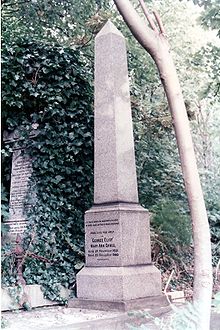 The Final Footprint – Eliot was not buried in Westminster Abbey because of her denial of the Christian faith and her “irregular” though monogamous life with Lewes. She was interred in Highgate Cemetery (East), Highgate, London in the area reserved for religious dissenters or agnostics, next to Lewes. In 1980, on the centenary of her death, a memorial stone was established for her in the Poets’ Corner. Several buildings in her birthplace of Nuneaton are named after her or titles of her novels, such as The George Eliot School (previously George Eliot Community School) and Middlemarch Junior School. In 1948, Nuneaton Emergency Hospital was named George Eliot Hospital in Eliot’s honour. George Eliot Road, in Foleshill, Coventry was named in her honour. Nuneaton motor cycle manufacturer John Birch named his motor cycles after her. A statue of Eliot is in Newdegate Street, Nuneaton, and Nuneaton Museum & Art Gallery has a display of material related to her. Other notable final footprints at Highgate include; Karl Marx, Christina Rossetti and Jean Simmons.
The Final Footprint – Eliot was not buried in Westminster Abbey because of her denial of the Christian faith and her “irregular” though monogamous life with Lewes. She was interred in Highgate Cemetery (East), Highgate, London in the area reserved for religious dissenters or agnostics, next to Lewes. In 1980, on the centenary of her death, a memorial stone was established for her in the Poets’ Corner. Several buildings in her birthplace of Nuneaton are named after her or titles of her novels, such as The George Eliot School (previously George Eliot Community School) and Middlemarch Junior School. In 1948, Nuneaton Emergency Hospital was named George Eliot Hospital in Eliot’s honour. George Eliot Road, in Foleshill, Coventry was named in her honour. Nuneaton motor cycle manufacturer John Birch named his motor cycles after her. A statue of Eliot is in Newdegate Street, Nuneaton, and Nuneaton Museum & Art Gallery has a display of material related to her. Other notable final footprints at Highgate include; Karl Marx, Christina Rossetti and Jean Simmons.
#RIP #OTD in 1939 singer (“Bo-Weevil Blues”, “Moonshine Blues”, “See See Rider Blues”, “Ma Rainey’s Black Bottom”, “Soon This Morning”), the “Mother of the Blues” Ma Rainey died of a heart attack in Columbus, Georgia, aged 53. Porterdale Cemetery, Columbus.
#RIP #OTD in 1943 writer (The Tale of Peter Rabbit), illustrator, natural scientist and conservationist (Lake District National Park) Beatrix Potter died of pneumonia and heart disease at her home in Near Sawrey, Cumbria, England at the age of 77. Cremation
 On this day in 1989, avant-garde novelist, playwright, theatre director, and poet, member of the French Resistance, Samuel Beckett died in a nursing home in Paris at the age of 83. Born Samuel Barclay Beckett on Good Friday, 13 April 1906 in Foxrock, Dublin. Beckett lived in Paris for most of his adult life and wrote in both English and French. His work offers a bleak, tragicomic outlook on human nature. In my opinion, Beckett is among the most influential writers of the 20th century. He is considered one of the last modernists. As an inspiration to many later writers, he is also sometimes considered one of the first postmodernists. Beckett is one of the key writers in what has been called the “Theatre of the Absurd”. His work became increasingly minimalist in his later career. Beckett was awarded the 1969 Nobel Prize in Literature “for his writing, which—in new forms for the novel and drama—in the destitution of modern man acquires its elevation”. He was elected Saoi of Aosdána in 1984. Suzanne Déchevaux-Dumesnil (1900 – 17 July 1989) was the tennis partner, lover, and later wife (1961 – 1989 her death) of Beckett. Barbara Bray had a long term relationship with Beckett, from 1961 to his death.
On this day in 1989, avant-garde novelist, playwright, theatre director, and poet, member of the French Resistance, Samuel Beckett died in a nursing home in Paris at the age of 83. Born Samuel Barclay Beckett on Good Friday, 13 April 1906 in Foxrock, Dublin. Beckett lived in Paris for most of his adult life and wrote in both English and French. His work offers a bleak, tragicomic outlook on human nature. In my opinion, Beckett is among the most influential writers of the 20th century. He is considered one of the last modernists. As an inspiration to many later writers, he is also sometimes considered one of the first postmodernists. Beckett is one of the key writers in what has been called the “Theatre of the Absurd”. His work became increasingly minimalist in his later career. Beckett was awarded the 1969 Nobel Prize in Literature “for his writing, which—in new forms for the novel and drama—in the destitution of modern man acquires its elevation”. He was elected Saoi of Aosdána in 1984. Suzanne Déchevaux-Dumesnil (1900 – 17 July 1989) was the tennis partner, lover, and later wife (1961 – 1989 her death) of Beckett. Barbara Bray had a long term relationship with Beckett, from 1961 to his death.
 The Final Footprint – Suzanne died on 17 July 1989. The two were interred together in the Cimetière du Montparnasse in Paris and share a simple granite gravestone that follows Beckett’s directive that it should be “any colour, so long as it’s grey.” Other notable Final Footprints at Montparnasse include; Charles Baudelaire, Simone de Beauvoir, Emmanuel Chabrier, César Franck, Guy de Maupassant, Adah Isaacs Menken, Man Ray, Camille Saint-Saëns, Jean-Paul Sartre, Jean Seberg, and Susan Sontag.
The Final Footprint – Suzanne died on 17 July 1989. The two were interred together in the Cimetière du Montparnasse in Paris and share a simple granite gravestone that follows Beckett’s directive that it should be “any colour, so long as it’s grey.” Other notable Final Footprints at Montparnasse include; Charles Baudelaire, Simone de Beauvoir, Emmanuel Chabrier, César Franck, Guy de Maupassant, Adah Isaacs Menken, Man Ray, Camille Saint-Saëns, Jean-Paul Sartre, Jean Seberg, and Susan Sontag.
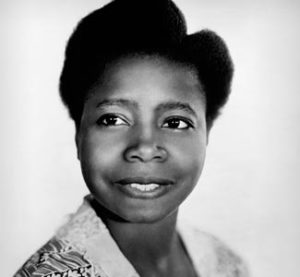 On this day in 1995, actress, Butterfly McQueen, died at the Augusta Regional Medical Center in Augusta, Georgia at the age of 84. Born Thelma McQueen on 7 January 1911 in Tampa, Florida. Apparently, her nickname was a tribute to her constantly moving hands. She appeared as Prissy, Scarlett O’Hara’s maid in the film version of Margaret Mitchell’s Gone with the Wind. The cast of GWTW included; Vivien Leigh, Clark Gable, Thomas Mitchell, and Hattie McDaniel. She never married.
On this day in 1995, actress, Butterfly McQueen, died at the Augusta Regional Medical Center in Augusta, Georgia at the age of 84. Born Thelma McQueen on 7 January 1911 in Tampa, Florida. Apparently, her nickname was a tribute to her constantly moving hands. She appeared as Prissy, Scarlett O’Hara’s maid in the film version of Margaret Mitchell’s Gone with the Wind. The cast of GWTW included; Vivien Leigh, Clark Gable, Thomas Mitchell, and Hattie McDaniel. She never married.
The Final Footprint – McQueen’s body was donated to medical science, per her wishes.
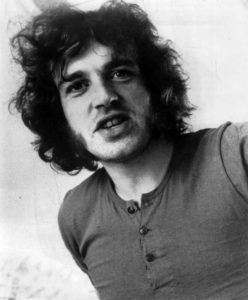 On this day in 2014, singer and musician Joe Cocker died from lung cancer in Crawford, Colorado, at the age of 70. Born John Robert “Joe” Cocker on 20 May 1944 in Sheffield, West Riding of Yorkshire, England. Perhaps best known for his gritty voice, spasmodic body movement in performance and definitive versions of popular songs of varying genre.
On this day in 2014, singer and musician Joe Cocker died from lung cancer in Crawford, Colorado, at the age of 70. Born John Robert “Joe” Cocker on 20 May 1944 in Sheffield, West Riding of Yorkshire, England. Perhaps best known for his gritty voice, spasmodic body movement in performance and definitive versions of popular songs of varying genre.
Cocker’s cover of the Beatles’ “With a Little Help from My Friends” reached number one in the UK in 1968. He performed the song live at Woodstock in 1969 and performed the same year at the Isle of Wight Festival, and at the Party at the Palace concert in 2002 for the Golden Jubilee of Queen Elizabeth II. His version also became the theme song for the TV series The Wonder Years. His 1974 cover of “You Are So Beautiful” reached number five in the US. Cocker was the recipient of several awards, including a 1983 Grammy Award for his US number one “Up Where We Belong”, a duet with Jennifer Warnes.
In 2007, Cocker was awarded a bronze Sheffield Legends plaque in his hometown and in 2008 he received an OBE at Buckingham Palace for services to music.
In 1963, Cocker began dating Eileen Webster, also a resident of Sheffield. The couple dated intermittently for the next 13 years, and separated permanently in 1976.
In 1978, Cocker moved onto a ranch owned by Jane Fonda in Santa Barbara, California. Pam Baker, a local summer camp director and fan of Cocker’s music, persuaded the actress to lend the house to Cocker. Baker began dating Cocker, and they married on 11 October 1987. The couple resided on the Mad Dog Ranch in Crawford, Colorado.

Cocker in concert at Palasport, Rome, July 1972

Cocker performing on 16 October 1980 in the National Stadium, Dublin

Cocker in Hallandale Beach, Florida, in 2003
 The Final Footprint
The Final Footprint
On 11 September 2015 a “Mad Dogs & Englishmen” tribute concert to Joe Cocker was performed at the Lockn’ Festival featuring Tedeschi Trucks Band, Chris Stainton, Leon Russell, Rita Coolidge, Claudia Lennear, Pamela Polland, Doyle Bramhall II, Dave Mason, John Bell, Warren Haynes and Chris Robinson, amongst others. In commemoration, a Joe Cocker Mad Dogs and Englishmen Memory Book was created by Linda Wolf to celebrate the event. Cocker was cremated and his cremated remains are interred at Garden of Memories Cemetery in Crawford.
Have you planned yours yet?
Follow TFF on twitter @RIPTFF

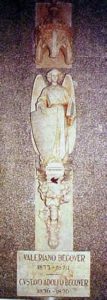
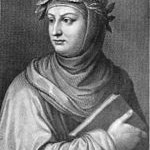 On this day in 1375 Italian author and poet, a friend, student, and correspondent of Petrarch, an important Renaissance humanist and the author of a number of notable works including the Decameron, On Famous Women, and his poetry in the Italian vernacular, Giovanni Boccaccio died at the age of sixty-two in Certaldo, Tuscany, Italy, where he is buried. Other notable works include Filostrato and Teseida (the sources for Chaucer’s Troilus and Criseyde and The Knight’s Tale, respectively), Filocolo, a prose version of an existing French romance and the source for Chaucer’s The Canterbury Tales, and La caccia di Diana, a poem in terza rima listing Neapolitan women.
On this day in 1375 Italian author and poet, a friend, student, and correspondent of Petrarch, an important Renaissance humanist and the author of a number of notable works including the Decameron, On Famous Women, and his poetry in the Italian vernacular, Giovanni Boccaccio died at the age of sixty-two in Certaldo, Tuscany, Italy, where he is buried. Other notable works include Filostrato and Teseida (the sources for Chaucer’s Troilus and Criseyde and The Knight’s Tale, respectively), Filocolo, a prose version of an existing French romance and the source for Chaucer’s The Canterbury Tales, and La caccia di Diana, a poem in terza rima listing Neapolitan women.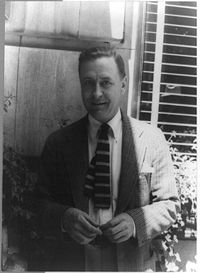 On this day in 1940, novelist, essayist, screenwriter, and short-story writer F. Scott Fitzgerald, died from a heart attack in Hollywood at the age of 44. Born Francis Scott Key Fitzgerald on 24 September 1896 in St. Paul, Minnesota into an Irish Catholic family. Named after his famous second cousin Francis Scott Key, three times removed. Fitzgerald attended Princeton University. He and his wife Zelda Sayre Fitzgerald helped define the Jazz Age, a term he coined. In my opinion, one of the greatest writers of the 20th century. He finished four novels, This Side of Paradise, The Beautiful and Damned, Tender Is the Night and his most famous, the celebrated classic, The Great Gatsby. A fifth, unfinished novel, The Love of the Last Tycoon was published posthumously. He and Zelda married in 1920. At the time of his death he was living with his lover Sheilah Graham.
On this day in 1940, novelist, essayist, screenwriter, and short-story writer F. Scott Fitzgerald, died from a heart attack in Hollywood at the age of 44. Born Francis Scott Key Fitzgerald on 24 September 1896 in St. Paul, Minnesota into an Irish Catholic family. Named after his famous second cousin Francis Scott Key, three times removed. Fitzgerald attended Princeton University. He and his wife Zelda Sayre Fitzgerald helped define the Jazz Age, a term he coined. In my opinion, one of the greatest writers of the 20th century. He finished four novels, This Side of Paradise, The Beautiful and Damned, Tender Is the Night and his most famous, the celebrated classic, The Great Gatsby. A fifth, unfinished novel, The Love of the Last Tycoon was published posthumously. He and Zelda married in 1920. At the time of his death he was living with his lover Sheilah Graham.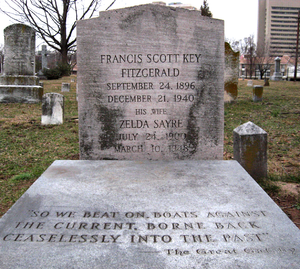 The Final Footprint – Fitzgerald was originally buried in Rockville Union Cemetery, Rockville, Maryland. Zelda died in 1948, in a fire at the Highland Mental Hospital in Asheville, North Carolina. Their daughter, Frances Scott Fitzgerald Lanahan worked to overturn the Archdiocese of Baltimore ruling that Fitzgerald died a non practicing Catholic, so that he could be at rest at the Roman Catholic cemetery where his father’s family was laid. Both Scott’s and Zelda’s remains were moved to the family plot in Saint Mary’s Cemetery, in Rockville, Maryland in 1975. Their graves are marked by a large companion marble monument and a marble full ledger. The inscription on the ledger is the last line from his novel, The Great Gatsby; SO WE BEAT ON, BOATS AGAINST THE CURRENT, BORNE BACK CEASELESSLY INTO THE PAST. – The Great Gatsby. A cenotaph, in memoriam, is placed at Oakwood Cemetery in Montgomery, Alabama, Zelda’s hometown.
The Final Footprint – Fitzgerald was originally buried in Rockville Union Cemetery, Rockville, Maryland. Zelda died in 1948, in a fire at the Highland Mental Hospital in Asheville, North Carolina. Their daughter, Frances Scott Fitzgerald Lanahan worked to overturn the Archdiocese of Baltimore ruling that Fitzgerald died a non practicing Catholic, so that he could be at rest at the Roman Catholic cemetery where his father’s family was laid. Both Scott’s and Zelda’s remains were moved to the family plot in Saint Mary’s Cemetery, in Rockville, Maryland in 1975. Their graves are marked by a large companion marble monument and a marble full ledger. The inscription on the ledger is the last line from his novel, The Great Gatsby; SO WE BEAT ON, BOATS AGAINST THE CURRENT, BORNE BACK CEASELESSLY INTO THE PAST. – The Great Gatsby. A cenotaph, in memoriam, is placed at Oakwood Cemetery in Montgomery, Alabama, Zelda’s hometown.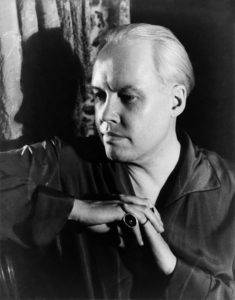 On this day in 1964, writer and artistic photographer Carl Van Vechten died in New York City at the age of 84. Born June 17, 1880 in Cedar Rapids, Iowa. He was a patron of the Harlem Renaissance and the literary executor of Gertrude Stein. In his later years, he took up photography and took many portraits of notable people.
On this day in 1964, writer and artistic photographer Carl Van Vechten died in New York City at the age of 84. Born June 17, 1880 in Cedar Rapids, Iowa. He was a patron of the Harlem Renaissance and the literary executor of Gertrude Stein. In his later years, he took up photography and took many portraits of notable people. The Final Footprint
The Final Footprint
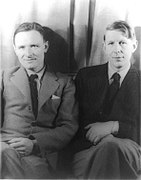



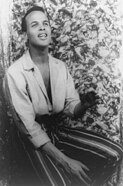

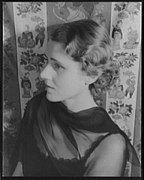




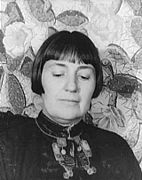







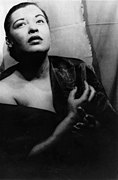




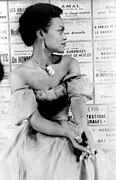




















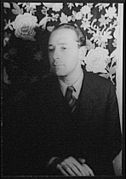



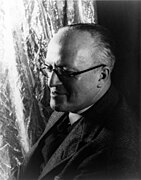
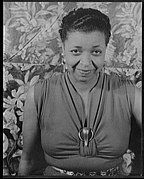




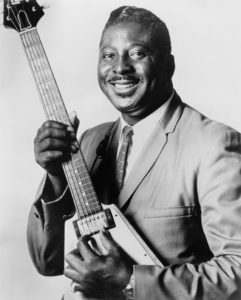
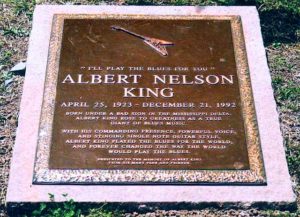 The Final Footprint
The Final Footprint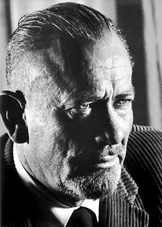 On this day in 1968, Pulitzer Prize and Noble Prize-winning writer, John Steinbeck, died of heart disease in New York City at the age of 66. Born John Ernst Steinbeck, Jr. on 27 February 1902 in Salinas, California of German and Irish descent. Perhaps best remembered for his novels; The Grapes of Wrath (1939) which won the Pulitzer, East of Eden (1952) and the novella Of Mice and Men (1937). Most of Steinbeck’s work is set in southern and central California, particularly in the Salinas Valley and the California Coast Ranges region. His works frequently explored the themes of fate and injustice, especially as applied to downtrodden or everyman protagonists. The movie version of East of Eden, directed by Elia Kazan, marked the debut of James Dean. He attended Stanford University but did not graduate. Steinbeck married three times; Carol Henning (1930 – 1943 divorce), Gwyndolyn Conger (1943 – 1948 divorce), Elaine Scott (1950 – 1968 his death).
On this day in 1968, Pulitzer Prize and Noble Prize-winning writer, John Steinbeck, died of heart disease in New York City at the age of 66. Born John Ernst Steinbeck, Jr. on 27 February 1902 in Salinas, California of German and Irish descent. Perhaps best remembered for his novels; The Grapes of Wrath (1939) which won the Pulitzer, East of Eden (1952) and the novella Of Mice and Men (1937). Most of Steinbeck’s work is set in southern and central California, particularly in the Salinas Valley and the California Coast Ranges region. His works frequently explored the themes of fate and injustice, especially as applied to downtrodden or everyman protagonists. The movie version of East of Eden, directed by Elia Kazan, marked the debut of James Dean. He attended Stanford University but did not graduate. Steinbeck married three times; Carol Henning (1930 – 1943 divorce), Gwyndolyn Conger (1943 – 1948 divorce), Elaine Scott (1950 – 1968 his death).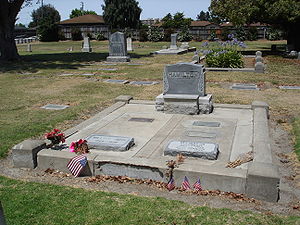 The Final Footprint – Steinbeck was cremated and his cremated remains were interred in the Hamilton Family Estate in Garden of Memories Memorial Park in Salinas with his parents and his maternal grand-parents. His mother’s maiden name was Hamilton. His third wife, Elaine, was later buried there as well. The estate is marked by an upright granite marker engraved with the Hamilton name.
The Final Footprint – Steinbeck was cremated and his cremated remains were interred in the Hamilton Family Estate in Garden of Memories Memorial Park in Salinas with his parents and his maternal grand-parents. His mother’s maiden name was Hamilton. His third wife, Elaine, was later buried there as well. The estate is marked by an upright granite marker engraved with the Hamilton name.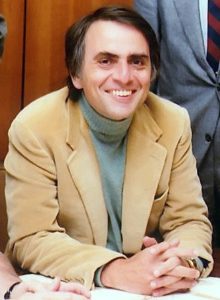 On this day in 1996, astronomer, cosmologist, astrophysicist, astrobiologist, author, science popularizer, and science communicator in astronomy and other natural sciences, Carl Sagan died from complications of myelodysplasia at the Fred Hutchinson Cancer Research Center in Seattle, at the age of 62. Born Carl Edward Sagan on November 9, 1934 in Brooklyn. Perhaps best known for his work as a science popularizer and communicator. His best known scientific contribution is research on extraterrestrial life. Sagan assembled the first physical messages sent into space: the Pioneer plaque and the Voyager Golden Record, universal messages that could potentially be understood by any extraterrestrial intelligence that might find them. Sagan argued the now accepted hypothesis that the high surface temperatures of Venus can be attributed to and calculated using the greenhouse effect.
On this day in 1996, astronomer, cosmologist, astrophysicist, astrobiologist, author, science popularizer, and science communicator in astronomy and other natural sciences, Carl Sagan died from complications of myelodysplasia at the Fred Hutchinson Cancer Research Center in Seattle, at the age of 62. Born Carl Edward Sagan on November 9, 1934 in Brooklyn. Perhaps best known for his work as a science popularizer and communicator. His best known scientific contribution is research on extraterrestrial life. Sagan assembled the first physical messages sent into space: the Pioneer plaque and the Voyager Golden Record, universal messages that could potentially be understood by any extraterrestrial intelligence that might find them. Sagan argued the now accepted hypothesis that the high surface temperatures of Venus can be attributed to and calculated using the greenhouse effect.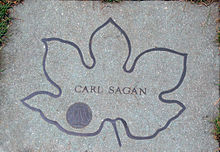
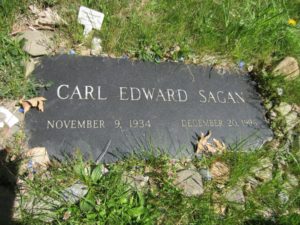
 On this day in 2009, actress and singer Brittany Murphy-Monjack died from pneumonia at Cedars-Sinai Medical Center, at the age of 32. Born Brittany Anne Bertolotti on November 10, 1977 in Atlanta. Murphy moved to Los Angeles as a teenager and pursued a career in acting. Her breakthrough role was as Tai Frasier in Clueless (1995), followed by supporting roles in independent films such as Freeway (1996) and Bongwater (1998). She made her stage debut in a Broadway production of Arthur Miller’s A View from the Bridge in 1997, before appearing as Daisy Randone in Girl, Interrupted (1999) and as Lisa Swenson in Drop Dead Gorgeous (1999).
On this day in 2009, actress and singer Brittany Murphy-Monjack died from pneumonia at Cedars-Sinai Medical Center, at the age of 32. Born Brittany Anne Bertolotti on November 10, 1977 in Atlanta. Murphy moved to Los Angeles as a teenager and pursued a career in acting. Her breakthrough role was as Tai Frasier in Clueless (1995), followed by supporting roles in independent films such as Freeway (1996) and Bongwater (1998). She made her stage debut in a Broadway production of Arthur Miller’s A View from the Bridge in 1997, before appearing as Daisy Randone in Girl, Interrupted (1999) and as Lisa Swenson in Drop Dead Gorgeous (1999).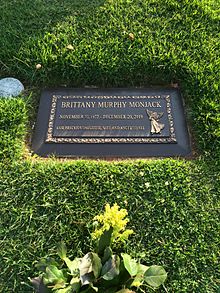
 On this day in 1848, novelist Emily Brontë died from tuberculosis at the Brontë family home in Haworth Parsonage, Haworth, England at the age of 30. Born Emily Jane Brontë on 30 July 1818 in the village of Thornton, Yorkshire, in the North of England, to Maria Branwell and Patrick Bronte. She was the younger sister of Charlotte Brontë. Perhaps best remembered for her only novel, Wuthering Heights, now considered a classic of English literature. She never married.
On this day in 1848, novelist Emily Brontë died from tuberculosis at the Brontë family home in Haworth Parsonage, Haworth, England at the age of 30. Born Emily Jane Brontë on 30 July 1818 in the village of Thornton, Yorkshire, in the North of England, to Maria Branwell and Patrick Bronte. She was the younger sister of Charlotte Brontë. Perhaps best remembered for her only novel, Wuthering Heights, now considered a classic of English literature. She never married.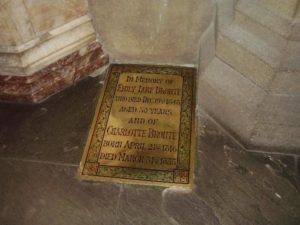
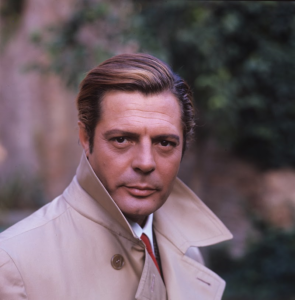 On this day in 1996, Academy Award-nominated actor, Marcello Mastroianni, died from pancreatic cancer in Paris at the age of 72. Born Marcello Vincenzo Domenico Mastroianni on 28 September 1924 in Fontana Liri, Italy. A man who worked with and loved some of the most beautiful women in the world. His prominent films include La dolce vita (1960), La Notte (1961),
On this day in 1996, Academy Award-nominated actor, Marcello Mastroianni, died from pancreatic cancer in Paris at the age of 72. Born Marcello Vincenzo Domenico Mastroianni on 28 September 1924 in Fontana Liri, Italy. A man who worked with and loved some of the most beautiful women in the world. His prominent films include La dolce vita (1960), La Notte (1961), 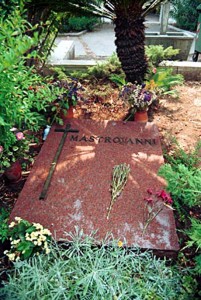 The Final Footprint –
The Final Footprint – 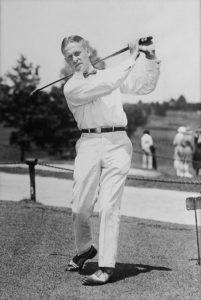 On this day in 1971, amateur golfer, designer of Augusta National Golf Club and co-founder of the Masters Tournament, Bobby Jones, died from complications of syringomyelia in Atlanta, Georgia at the age of 69. Born Robert Tyre Jones, Jr. on 17 March 1901 in Altanta. He earned his B.S. in Mechanical Engineering from Georgia Tech in 1922. He then earned a B.A. in English Literature from Harvard College in 1924. After only one year in law school at Emory University, he passed the Georgia bar exam. Jones was the most successful amateur golfer ever to compete on a national and international level. Jones won the the U.S Open four times, The Open Championship three times, the U.S. Amateur five times and the British Amateur once. In 1930, he won the Grand Slam, all four tournaments. In total, he won 13 major championships. In my opinion, he is the greatest golfer of all-time. Jones was married in 1924 to the former Mary Rice Malone.
On this day in 1971, amateur golfer, designer of Augusta National Golf Club and co-founder of the Masters Tournament, Bobby Jones, died from complications of syringomyelia in Atlanta, Georgia at the age of 69. Born Robert Tyre Jones, Jr. on 17 March 1901 in Altanta. He earned his B.S. in Mechanical Engineering from Georgia Tech in 1922. He then earned a B.A. in English Literature from Harvard College in 1924. After only one year in law school at Emory University, he passed the Georgia bar exam. Jones was the most successful amateur golfer ever to compete on a national and international level. Jones won the the U.S Open four times, The Open Championship three times, the U.S. Amateur five times and the British Amateur once. In 1930, he won the Grand Slam, all four tournaments. In total, he won 13 major championships. In my opinion, he is the greatest golfer of all-time. Jones was married in 1924 to the former Mary Rice Malone.


 On this day in 2008, actress and producer Majel Barrett died at her home in Bel Air, Los Angeles, California, as a result of leukemia. She was 76 years old. Born Majel Leigh Hudec on February 23, 1932 in Cleveland.
On this day in 2008, actress and producer Majel Barrett died at her home in Bel Air, Los Angeles, California, as a result of leukemia. She was 76 years old. Born Majel Leigh Hudec on February 23, 1932 in Cleveland. On this day in 2016 actress Zsa Zsa Gabor died of cardiac arrest at Ronald Reagan UCLA Medical Center, Los Angeles, aged 99. Born Sári Gábor on February 6, 1917, in Budapest.
On this day in 2016 actress Zsa Zsa Gabor died of cardiac arrest at Ronald Reagan UCLA Medical Center, Los Angeles, aged 99. Born Sári Gábor on February 6, 1917, in Budapest. The Final Footprint
The Final Footprint On this day in 1273, 13th-century Persian poet, jurist, theologian, and Sufi mystic, Jalāl ad-Dīn Muhammad Balkhī (
On this day in 1273, 13th-century Persian poet, jurist, theologian, and Sufi mystic, Jalāl ad-Dīn Muhammad Balkhī ( The Final Footprint – Rumi predicted his own death and composed the well-known ghazal, which begins with the verse:
The Final Footprint – Rumi predicted his own death and composed the well-known ghazal, which begins with the verse:
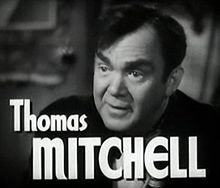 On this day in 1962, actor, playwright and screenwriter, Thomas Mitchell, died from peritoneal mesothelioma in Beverly Hills, California at the age of 70. Born to Irish immigrants on 11 July 1892 in Elizabeth, New Jersey. Perhaps best remembered for appearing alongside Vivien Leigh, Clark Gable and Hattie McDaniel in Gone with the Wind as Gerald O’Hara, the father of Scarlett O’Hara. Other memoralbe roles inlcude the drunken doctor Doc Boone in John Ford’s Stagecoach, and Uncle Billy in It’s a Wonderful Life. Mitchell was the first person to win an Oscar, an Emmy, and a Tony Award.
On this day in 1962, actor, playwright and screenwriter, Thomas Mitchell, died from peritoneal mesothelioma in Beverly Hills, California at the age of 70. Born to Irish immigrants on 11 July 1892 in Elizabeth, New Jersey. Perhaps best remembered for appearing alongside Vivien Leigh, Clark Gable and Hattie McDaniel in Gone with the Wind as Gerald O’Hara, the father of Scarlett O’Hara. Other memoralbe roles inlcude the drunken doctor Doc Boone in John Ford’s Stagecoach, and Uncle Billy in It’s a Wonderful Life. Mitchell was the first person to win an Oscar, an Emmy, and a Tony Award.
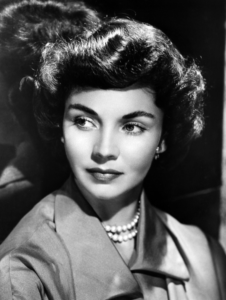 On this day in 2009, actress and mental health advocate Jennifer Jones died in Malibu, California at the age of 90. Born Phylis Lee Isley on March 2, 1919 in Tulsa, Oklahoma. Over the course of her career that spanned more five decades, she was nominated for the Oscar five times, including one win for Best Actress, as well as a Golden Globe Award win for Best Actress in a Drama. Jones is among the youngest actresses to receive an Academy Award, having won on her 25th birthday.
On this day in 2009, actress and mental health advocate Jennifer Jones died in Malibu, California at the age of 90. Born Phylis Lee Isley on March 2, 1919 in Tulsa, Oklahoma. Over the course of her career that spanned more five decades, she was nominated for the Oscar five times, including one win for Best Actress, as well as a Golden Globe Award win for Best Actress in a Drama. Jones is among the youngest actresses to receive an Academy Award, having won on her 25th birthday. The Final Footprint
The Final Footprint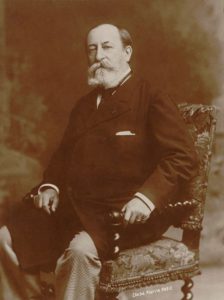
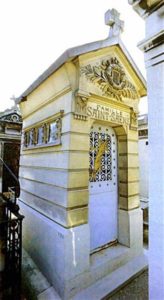 The Final Footprint
The Final Footprint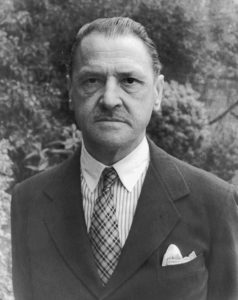 On this day in 1965 playwright, novelist, short story writer W. Somerset Maugham died in Nice, France at the age of 91. Born William Somerset Maugham on 25 January 1874 in the U. K. Embassy in Paris. Among the most popular writers of his era and reputedly one of the highest paid authors during the 1930s. Maugham trained and qualified as a doctor. The first run of his first novel, Liza of Lambeth (1897), sold out so rapidly that Maugham gave up medicine to write full-time. During the First World War, he served with the Red Cross and in the ambulance corps, before being recruited in 1916 into the British Secret Intelligence Service, for which he worked in Switzerland and Russia before the Bolshevik Revolution of 1917. During and after the war, he traveled in India and Southeast Asia; all of these experiences were reflected in later short stories and novels. Maugham married Gwendoline Maud Syrie Barnardo Wellcome (1917 – 1928 divorce). Maugham’s love life apparently was almost never smooth. He once confessed: “I have most loved people who cared little or nothing for me and when people have loved me I have been embarrassed… In order not to hurt their feelings, I have often acted a passion I did not feel.”
On this day in 1965 playwright, novelist, short story writer W. Somerset Maugham died in Nice, France at the age of 91. Born William Somerset Maugham on 25 January 1874 in the U. K. Embassy in Paris. Among the most popular writers of his era and reputedly one of the highest paid authors during the 1930s. Maugham trained and qualified as a doctor. The first run of his first novel, Liza of Lambeth (1897), sold out so rapidly that Maugham gave up medicine to write full-time. During the First World War, he served with the Red Cross and in the ambulance corps, before being recruited in 1916 into the British Secret Intelligence Service, for which he worked in Switzerland and Russia before the Bolshevik Revolution of 1917. During and after the war, he traveled in India and Southeast Asia; all of these experiences were reflected in later short stories and novels. Maugham married Gwendoline Maud Syrie Barnardo Wellcome (1917 – 1928 divorce). Maugham’s love life apparently was almost never smooth. He once confessed: “I have most loved people who cared little or nothing for me and when people have loved me I have been embarrassed… In order not to hurt their feelings, I have often acted a passion I did not feel.” The Final Footprint – Maugham was cremated and his cremains were scattered near the Maughan Library, The King’s School, Canterbury.
The Final Footprint – Maugham was cremated and his cremains were scattered near the Maughan Library, The King’s School, Canterbury.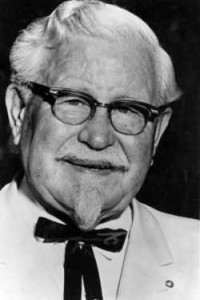 On this day in 1980, U. S. Army veteran, entrepreneur, founder of Kentucky Fried Chicken, philanthropist, Colonel Sanders, died in Louisville, Kentucky at the age of 90. Born Harland David Sanders on 9 September 1890 in Henryville, Indiana. He opened his first restaurant in Corbin, Kentucky in 1930 when he was 40. Sanders began developing his distinctive appearance in 1950, growing his trademark mustache and goatee and donning a white suit and string tie. He never wore anything else in public during the last 20 years of his life, using a heavy wool suit in the winter and a light cotton suit in the summer. At age 65, Sanders’ restaurant failed due to the new Interstate 75 reducing his customer traffic. He took $105 from his first Social Security check and began visiting potential franchisees. Dave Thomas, founder of Wendy’s was offered a chance to turn around a failing Kentucky Fried Chicken restaurant. He helped save the restaurant, and revolutionized the fast food industry. Sanders was married twice; Josephine King (divorced) and Claudia Price.
On this day in 1980, U. S. Army veteran, entrepreneur, founder of Kentucky Fried Chicken, philanthropist, Colonel Sanders, died in Louisville, Kentucky at the age of 90. Born Harland David Sanders on 9 September 1890 in Henryville, Indiana. He opened his first restaurant in Corbin, Kentucky in 1930 when he was 40. Sanders began developing his distinctive appearance in 1950, growing his trademark mustache and goatee and donning a white suit and string tie. He never wore anything else in public during the last 20 years of his life, using a heavy wool suit in the winter and a light cotton suit in the summer. At age 65, Sanders’ restaurant failed due to the new Interstate 75 reducing his customer traffic. He took $105 from his first Social Security check and began visiting potential franchisees. Dave Thomas, founder of Wendy’s was offered a chance to turn around a failing Kentucky Fried Chicken restaurant. He helped save the restaurant, and revolutionized the fast food industry. Sanders was married twice; Josephine King (divorced) and Claudia Price.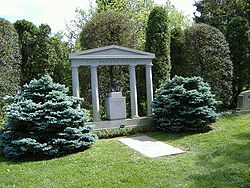
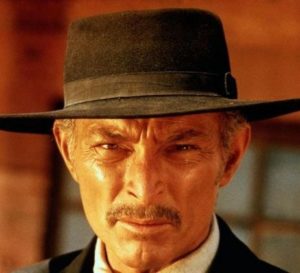 On this day in 1989, United States Navy Veteran, actor Lee Van Cleef died from a heart attack at his home in Oxnard, California, at the age of 64. Throat cancer was listed as a secondary cause of death.
On this day in 1989, United States Navy Veteran, actor Lee Van Cleef died from a heart attack at his home in Oxnard, California, at the age of 64. Throat cancer was listed as a secondary cause of death.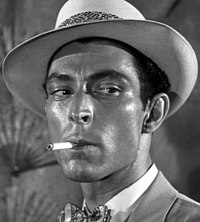
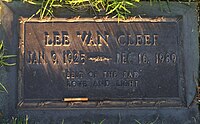
 On this day in 1997, singer Nicolette Larson died
On this day in 1997, singer Nicolette Larson died 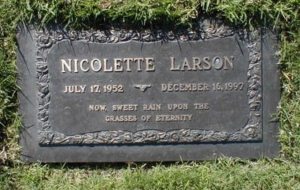 The Final Footprint
The Final Footprint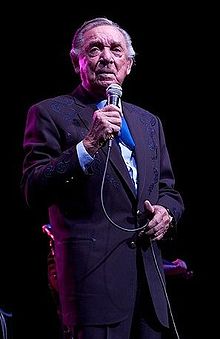 On this day in 2013, Grammy award winning singer, songwriter, guitarist, The Cherokee Cowboy, Ray Price died from complications of pancreatic cancer at his home in Mt. Pleasant, Texas at the age of 87. Born Noble Ray Price on 12 January 1926 Perryville, Texas.
On this day in 2013, Grammy award winning singer, songwriter, guitarist, The Cherokee Cowboy, Ray Price died from complications of pancreatic cancer at his home in Mt. Pleasant, Texas at the age of 87. Born Noble Ray Price on 12 January 1926 Perryville, Texas.
 On this day in 1675, artist Johannes Vermeer died after a short illness in Delft, Dutch Republic, at the age of 43. Baptized On 31 October 1632 in the Reformed Church in Delft. Perhaps best known for his painting,
On this day in 1675, artist Johannes Vermeer died after a short illness in Delft, Dutch Republic, at the age of 43. Baptized On 31 October 1632 in the Reformed Church in Delft. Perhaps best known for his painting, 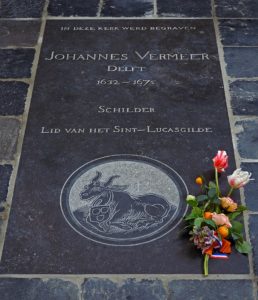 The Final Footprint – Vermeer is entombed in the Oude Kerk (Old Church), nicknamed Oude Jan (“Old John”), a Gothic Protestant church in the old city center of Delft. Its most recognizable feature is a 75-meter-high brick tower that leans about two meters from the vertical. Tracy Chevalier‘s novel Girl with a Pearl Earring and the film of the same name (2003) are named after the painting; they present a fictional account of its creation by Vermeer and his relationship with the (equally fictional) model. The film was nominated for Oscars in cinematography, art direction, and costume design
The Final Footprint – Vermeer is entombed in the Oude Kerk (Old Church), nicknamed Oude Jan (“Old John”), a Gothic Protestant church in the old city center of Delft. Its most recognizable feature is a 75-meter-high brick tower that leans about two meters from the vertical. Tracy Chevalier‘s novel Girl with a Pearl Earring and the film of the same name (2003) are named after the painting; they present a fictional account of its creation by Vermeer and his relationship with the (equally fictional) model. The film was nominated for Oscars in cinematography, art direction, and costume design






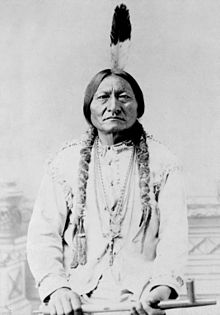 On this day in 1890, a Hunkpapa Lakota holy man, tribal chief, Sitting Bull was killed by Indian agency police on the Standing Rock Indian Reservation in South Dakota, during an attempt to arrest him, at a time when authorities feared that he would join the Ghost Dance movement, at the age of 58 or 59. Tȟatȟáŋka Íyotake in Standard Lakota Orthography Jumping Badger, also nicknamed Slon-he or “Slow”, in the Dakota Territory c. 1831. In 2007, Sitting Bull’s great-grandson asserted from family oral tradition that Sitting Bull was born along the Yellowstone River, south of present-day Miles City, Montana. Sitting Bull led his people as a tribal chief during years of resistance to United States government policies. Before the Battle of the Little Bighorn, Sitting Bull had a vision in which he saw the defeat of the 7th Cavalry under Lt. Col. George Armstrong Custer on 25 June 25 1876. Sitting Bull’s leadership inspired his people to a major victory. Months after their victory at the battle, Sitting Bull and his group left the United States for Wood Mountain, North-West Territories (now Saskatchewan), where he remained until 1881, at which time he and most of his band returned to US territory and surrendered to U.S. forces. After working as a performer with Buffalo Bill’s Wild West show, Sitting Bull returned to the Standing Rock Agency in South Dakota.
On this day in 1890, a Hunkpapa Lakota holy man, tribal chief, Sitting Bull was killed by Indian agency police on the Standing Rock Indian Reservation in South Dakota, during an attempt to arrest him, at a time when authorities feared that he would join the Ghost Dance movement, at the age of 58 or 59. Tȟatȟáŋka Íyotake in Standard Lakota Orthography Jumping Badger, also nicknamed Slon-he or “Slow”, in the Dakota Territory c. 1831. In 2007, Sitting Bull’s great-grandson asserted from family oral tradition that Sitting Bull was born along the Yellowstone River, south of present-day Miles City, Montana. Sitting Bull led his people as a tribal chief during years of resistance to United States government policies. Before the Battle of the Little Bighorn, Sitting Bull had a vision in which he saw the defeat of the 7th Cavalry under Lt. Col. George Armstrong Custer on 25 June 25 1876. Sitting Bull’s leadership inspired his people to a major victory. Months after their victory at the battle, Sitting Bull and his group left the United States for Wood Mountain, North-West Territories (now Saskatchewan), where he remained until 1881, at which time he and most of his band returned to US territory and surrendered to U.S. forces. After working as a performer with Buffalo Bill’s Wild West show, Sitting Bull returned to the Standing Rock Agency in South Dakota.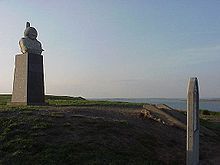
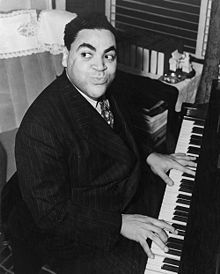 On this day in 1943, influential jazz pianist, organist, composer, singer, Fats Waller died from pneumonia on a cross-country train trip near Kansas City, Missouri at the age of 39. Born Thomas Wright Waller in New York City on 21 May 1904. Waller’s innovations to the Harlem stride style laid the groundwork for modern jazz piano, and his best-known compositions, “Ain’t Misbehavin'” and “Honeysuckle Rose”, were inducted into the Grammy Hall of Fame posthumously, in 1984 and 1999.
On this day in 1943, influential jazz pianist, organist, composer, singer, Fats Waller died from pneumonia on a cross-country train trip near Kansas City, Missouri at the age of 39. Born Thomas Wright Waller in New York City on 21 May 1904. Waller’s innovations to the Harlem stride style laid the groundwork for modern jazz piano, and his best-known compositions, “Ain’t Misbehavin'” and “Honeysuckle Rose”, were inducted into the Grammy Hall of Fame posthumously, in 1984 and 1999.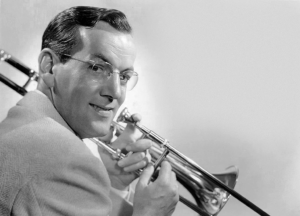 On this day in 1944,
On this day in 1944, 

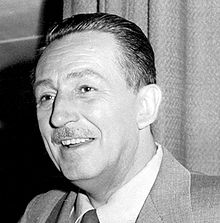 On this day in 1966, film producer, director, screenwriter, voice actor, animator, entrepreneur, entertainer, international icon, philanthropist, co-founder (with his brother Roy) of Walt Disney Productions, Walt Disney, died in Burbank, California at the age of 65. Born Walter Elias Disney on 5 December 1901 in Hermosa, Chicago, Illinois. His father, Elias, was of Irish-Canadian descent. His mother, Flora Call, was of German-American descent. Disney married once, Lillian Bounds (1925 – 1966 his death). Disney holds the record for most Academy Award nominations (with 59) and most Oscars awarded (with 22). The first movie I remember watching was Disney’s animated production of The Jungle Book (1967) based on the book by Rudyard Kipling.
On this day in 1966, film producer, director, screenwriter, voice actor, animator, entrepreneur, entertainer, international icon, philanthropist, co-founder (with his brother Roy) of Walt Disney Productions, Walt Disney, died in Burbank, California at the age of 65. Born Walter Elias Disney on 5 December 1901 in Hermosa, Chicago, Illinois. His father, Elias, was of Irish-Canadian descent. His mother, Flora Call, was of German-American descent. Disney married once, Lillian Bounds (1925 – 1966 his death). Disney holds the record for most Academy Award nominations (with 59) and most Oscars awarded (with 22). The first movie I remember watching was Disney’s animated production of The Jungle Book (1967) based on the book by Rudyard Kipling.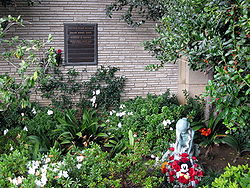 The Final Footprint – Disney was cremated and his cremated remains reside in the Disney Family Private Garden, Forest Lawn Memorial Park, Glendale, California. Shortly before his death, he apparently wrote down the name of actor Kurt Russell. No one seems to know why. Before Disney died he made a short film for the Disney Company executive board in which he addressed each board member and ended the film by saying, “I’ll be seeing you.” In 2009, the Walt Disney Family Museum opened in the Presidio of San Francisco. Disney has two stars on the Hollywood Walk of Fame, one for movies and one for television. Other notable Final Footprints at Forest Lawn Glendale include; L. Frank Baum, Humphrey Bogart, Lon Chaney, Natalie Cole, Nat King Cole, Sam Cooke, Dorothy Dandridge, Sammy Davis, Jr., Errol Flynn, Clark Gable, Jean Harlow, Michael Jackson, Jennifer Jones, Carole Lombard, Tom Mix, Casey Stengel, Jimmy Stewart, Elizabeth Taylor, and Spencer Tracy.
The Final Footprint – Disney was cremated and his cremated remains reside in the Disney Family Private Garden, Forest Lawn Memorial Park, Glendale, California. Shortly before his death, he apparently wrote down the name of actor Kurt Russell. No one seems to know why. Before Disney died he made a short film for the Disney Company executive board in which he addressed each board member and ended the film by saying, “I’ll be seeing you.” In 2009, the Walt Disney Family Museum opened in the Presidio of San Francisco. Disney has two stars on the Hollywood Walk of Fame, one for movies and one for television. Other notable Final Footprints at Forest Lawn Glendale include; L. Frank Baum, Humphrey Bogart, Lon Chaney, Natalie Cole, Nat King Cole, Sam Cooke, Dorothy Dandridge, Sammy Davis, Jr., Errol Flynn, Clark Gable, Jean Harlow, Michael Jackson, Jennifer Jones, Carole Lombard, Tom Mix, Casey Stengel, Jimmy Stewart, Elizabeth Taylor, and Spencer Tracy.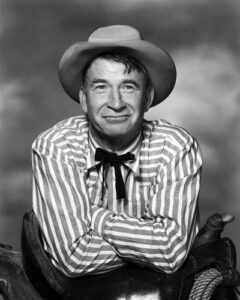 n this day in 1978 actor Chill Wills died from cancer in Encino, California, aged 76. Born Theodore Childress Wills in Seagoville, Texas, on July 18, 1902.
n this day in 1978 actor Chill Wills died from cancer in Encino, California, aged 76. Born Theodore Childress Wills in Seagoville, Texas, on July 18, 1902.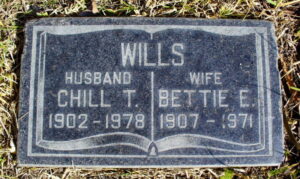

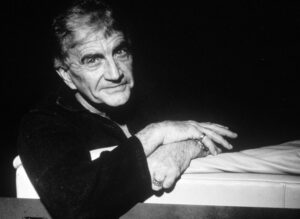 On this day in 2010 actor, film director, producer and screenwriter, Blake Edwards died of complications of pneumonia at the Saint John’s Health Center in Santa Monica, California, aged 88. Born William Blake Crump July 22, 1922, in Tulsa, Oklahoma.
On this day in 2010 actor, film director, producer and screenwriter, Blake Edwards died of complications of pneumonia at the Saint John’s Health Center in Santa Monica, California, aged 88. Born William Blake Crump July 22, 1922, in Tulsa, Oklahoma.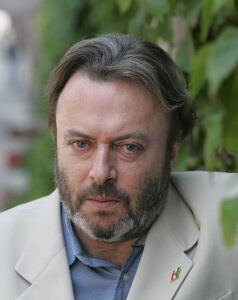 On this day in 2011 author and journalist who wrote or edited over 30 books (including five essay collections) on culture, politics, and literature, Christopher Hitchens died of complications from esophageal cancer at the University of Texas MD Anderson Cancer Center, Houston, aged 62. Born Christopher Eric Hitchens in Portsmouth, Hampshire on 13 April 1949.
On this day in 2011 author and journalist who wrote or edited over 30 books (including five essay collections) on culture, politics, and literature, Christopher Hitchens died of complications from esophageal cancer at the University of Texas MD Anderson Cancer Center, Houston, aged 62. Born Christopher Eric Hitchens in Portsmouth, Hampshire on 13 April 1949. On this day in 1944,
On this day in 1944, 
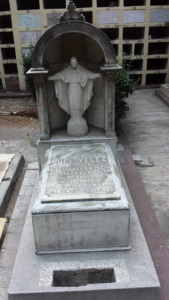 The Final Footprint
The Final Footprint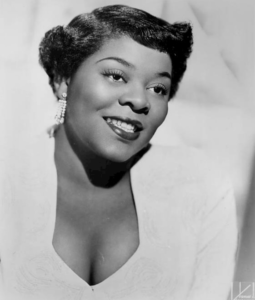 On this day in 1963, singer, pianist, Grammy winner, Rock and Roll Hall of Famer inductee, Queen of the Blues, Dinah Washington died in Detroit, Michigan from a combination of secobarbital and amobarbital, at the age of 39. Born Ruth Lee Jones was born in Tuscaloosa, Alabama, on 29 August 1924. She and her family moved to Chicago as a child. In my opinion, on of the best recording artists of the ’50s. Primarily a jazz vocalist, she performed and recorded in a wide variety of styles including blues, R&B, and traditional pop music. Washington married seven times, including NFL Hall of Famer Dick “Night Train” Lane.
On this day in 1963, singer, pianist, Grammy winner, Rock and Roll Hall of Famer inductee, Queen of the Blues, Dinah Washington died in Detroit, Michigan from a combination of secobarbital and amobarbital, at the age of 39. Born Ruth Lee Jones was born in Tuscaloosa, Alabama, on 29 August 1924. She and her family moved to Chicago as a child. In my opinion, on of the best recording artists of the ’50s. Primarily a jazz vocalist, she performed and recorded in a wide variety of styles including blues, R&B, and traditional pop music. Washington married seven times, including NFL Hall of Famer Dick “Night Train” Lane.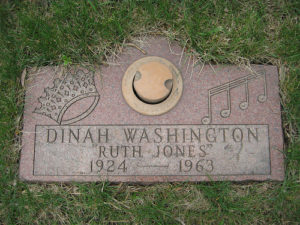 The Final Footprint – Washington is interred in Burr Oak Cemetery in Alsip, Illinois. In 1964, Aretha Franklin recorded a tribute album, Unforgettable: A Tribute to Dinah Washington. In 1993, the U.S. Post Office issued a Dinah Washington 29 cent commemorative postage stamp. In 2005, the Board of Commissioners renamed a park, near where Washington had lived in Chicago in the 1950s, Dinah Washington Park in her honor. In 2008, the city of Tuscaloosa renamed the section of 30th Avenue between 15th Street and Kaulton Park “Dinah Washington Avenue.” On 29 August 2013, the city of Tuscaloosa dedicated the old Allen Jemison Hardware building, on the northwest corner of Greensboro Avenue and 7th Street (620 Greensboro Avenue) as the newly renovated Dinah Washington Cultural Arts Center. Other notable final footprints at Burr Oak Cemetery include Willie Dixon and Emmett Till.
The Final Footprint – Washington is interred in Burr Oak Cemetery in Alsip, Illinois. In 1964, Aretha Franklin recorded a tribute album, Unforgettable: A Tribute to Dinah Washington. In 1993, the U.S. Post Office issued a Dinah Washington 29 cent commemorative postage stamp. In 2005, the Board of Commissioners renamed a park, near where Washington had lived in Chicago in the 1950s, Dinah Washington Park in her honor. In 2008, the city of Tuscaloosa renamed the section of 30th Avenue between 15th Street and Kaulton Park “Dinah Washington Avenue.” On 29 August 2013, the city of Tuscaloosa dedicated the old Allen Jemison Hardware building, on the northwest corner of Greensboro Avenue and 7th Street (620 Greensboro Avenue) as the newly renovated Dinah Washington Cultural Arts Center. Other notable final footprints at Burr Oak Cemetery include Willie Dixon and Emmett Till. On this day in 1985, 7 time All-Star, 3 time World Series Champion, 2 time AL MVP, Gold Glove winner,
On this day in 1985, 7 time All-Star, 3 time World Series Champion, 2 time AL MVP, Gold Glove winner,  New York Yankee and single season home run king, Roger Maris, died from
New York Yankee and single season home run king, Roger Maris, died from 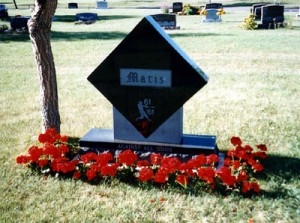 The Final Footprint – Maris is interred in Holy Cross Cemetery, Fargo, North Dakota. His grave is marked by a large upright granite marker in the shape of a baseball diamond. The Yankees placed a plaque in Monument Park in Yankee Stadium in honor of Maris. Monument Park is an open-air museum containing a collection of monuments, plaques, and retired numbers honoring distinguished members of the Yankees. Other notable Yankees whose final footprints include memorialization in Monument Park; Babe Ruth, Lou Gehrig, Joe DiMaggio, George Steinbrenner, Thurman Munson, Mickey Mantle, Roger Maris, Phil Rizzuto, Billy Martin, Mel Allen, Bob Sheppard, and Casey Stengel.
The Final Footprint – Maris is interred in Holy Cross Cemetery, Fargo, North Dakota. His grave is marked by a large upright granite marker in the shape of a baseball diamond. The Yankees placed a plaque in Monument Park in Yankee Stadium in honor of Maris. Monument Park is an open-air museum containing a collection of monuments, plaques, and retired numbers honoring distinguished members of the Yankees. Other notable Yankees whose final footprints include memorialization in Monument Park; Babe Ruth, Lou Gehrig, Joe DiMaggio, George Steinbrenner, Thurman Munson, Mickey Mantle, Roger Maris, Phil Rizzuto, Billy Martin, Mel Allen, Bob Sheppard, and Casey Stengel.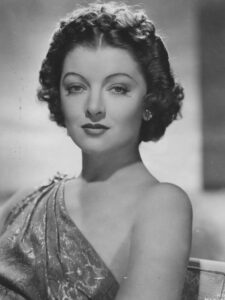 On this day in 1993 dancer, film, television and stage actress Myrna Loy died at Lenox Hill Hospital in Manhattan, aged 88. Born Myrna Adele Williams in Helena, Montana on 2 August 1905.
On this day in 1993 dancer, film, television and stage actress Myrna Loy died at Lenox Hill Hospital in Manhattan, aged 88. Born Myrna Adele Williams in Helena, Montana on 2 August 1905.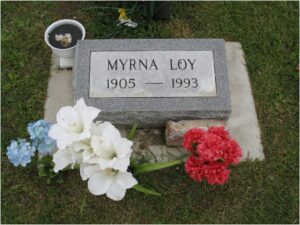 The Final Footprint
The Final Footprint On this day in 2013, stage and film actor Peter O’Toole died from stomach cancer at Wellington Hospital in St John’s Wood, London, aged 81. Born Peter Seamus O’Toole on 2 August 1932
On this day in 2013, stage and film actor Peter O’Toole died from stomach cancer at Wellington Hospital in St John’s Wood, London, aged 81. Born Peter Seamus O’Toole on 2 August 1932 
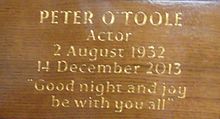
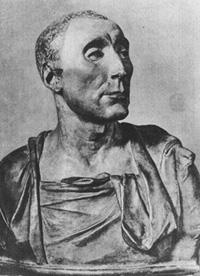 On this day in 1466, acclaimed Italian sculptor, Donatello, died in Florence, Italy at the age of 80. Born Donato di Niccolò di Betto Bardi c. 1386 in Florence, Italy. One of the most important Renaissance sculptors, known for his work in bas-relief, a form of shallow relief sculpture that, in Donatello’s case, incorporated significant 15th century developments in perspectival illusionism. His main works include:
On this day in 1466, acclaimed Italian sculptor, Donatello, died in Florence, Italy at the age of 80. Born Donato di Niccolò di Betto Bardi c. 1386 in Florence, Italy. One of the most important Renaissance sculptors, known for his work in bas-relief, a form of shallow relief sculpture that, in Donatello’s case, incorporated significant 15th century developments in perspectival illusionism. His main works include:
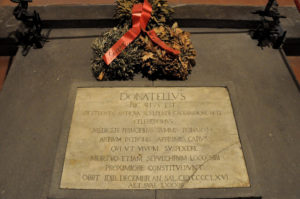 The Final Footprint – Donatello is entombed next to Cosimo de’ Medici the Elder in the Basilica di San Lorenzo (Basilica of St Lawrence), one of the largest churches of Florence, Italy, situated at the centre of the city’s main market district, and the burial place of all the principal members of the Medici family from Cosimo il Vecchio to Cosimo III.
The Final Footprint – Donatello is entombed next to Cosimo de’ Medici the Elder in the Basilica di San Lorenzo (Basilica of St Lawrence), one of the largest churches of Florence, Italy, situated at the centre of the city’s main market district, and the burial place of all the principal members of the Medici family from Cosimo il Vecchio to Cosimo III.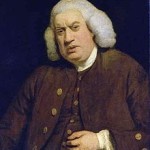 On this day in 1784, poet, essayist, moralist, literary critic, biographer, editor and lexicographer, Dr. Johnson, Samuel Johnson died at a friends house in Islington, London at the age of 75. Possibly the most distinguished man of letters in English history. He is also the subject of one of the most famous single works of biographical art in the whole of literature: James Boswell‘s Life of Samuel Johnson. Johnson married Elizabeth “Tetty” or “Testsey” Jervis Porter (1735 – 1752 her death). They married on 9 July 1735 at St. Werburgh’s Church, Derby, where the event is reenacted annually. Johnson called the marriage “a love-match on both sides,” and always recalled her affectionately and with grief, especially on the anniversary of her death. Born on 18 September 1709 in the family home above his father’s bookshop in Lichfield, Staffordshire.
On this day in 1784, poet, essayist, moralist, literary critic, biographer, editor and lexicographer, Dr. Johnson, Samuel Johnson died at a friends house in Islington, London at the age of 75. Possibly the most distinguished man of letters in English history. He is also the subject of one of the most famous single works of biographical art in the whole of literature: James Boswell‘s Life of Samuel Johnson. Johnson married Elizabeth “Tetty” or “Testsey” Jervis Porter (1735 – 1752 her death). They married on 9 July 1735 at St. Werburgh’s Church, Derby, where the event is reenacted annually. Johnson called the marriage “a love-match on both sides,” and always recalled her affectionately and with grief, especially on the anniversary of her death. Born on 18 September 1709 in the family home above his father’s bookshop in Lichfield, Staffordshire.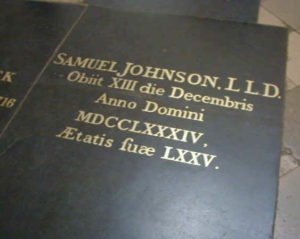 The Final Footprint – Johnson was buried on 20 December 1784 at Westminster Abbey. Other notable Final Footprints at Westminster include; Robert Browning, Lord Byron, Geoffrey Chaucer, Oliver Cromwell, Charles Darwin, Charles Dickens, Edward The Confessor, Elizabeth I, George II, George Friederic Handel, Stephen Hawking, James I (James VI of Scotland), Ben Jonson, Charles II, Edward III, Edward VI, Henry III, Henry V, Henry VII, Richard II, Rudyard Kipling, Henry Wadsworth Longfellow, John Milton, Sir Isaac Newton, Laurence Olivier, Henry Purcell, Mary I, Mary II, Mary Queen of Scots, Thomas Shadwell, Lord Alfred Tennyson, Dylan Thomas, and William III.
The Final Footprint – Johnson was buried on 20 December 1784 at Westminster Abbey. Other notable Final Footprints at Westminster include; Robert Browning, Lord Byron, Geoffrey Chaucer, Oliver Cromwell, Charles Darwin, Charles Dickens, Edward The Confessor, Elizabeth I, George II, George Friederic Handel, Stephen Hawking, James I (James VI of Scotland), Ben Jonson, Charles II, Edward III, Edward VI, Henry III, Henry V, Henry VII, Richard II, Rudyard Kipling, Henry Wadsworth Longfellow, John Milton, Sir Isaac Newton, Laurence Olivier, Henry Purcell, Mary I, Mary II, Mary Queen of Scots, Thomas Shadwell, Lord Alfred Tennyson, Dylan Thomas, and William III.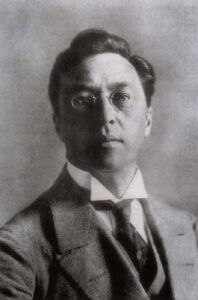 On this day in 1944 painter and art theorist Wassily Kandinsky died in Neuilly-sur-Seine, France, aged 77. Born Wassily Wassilyevich Kandinsky in Moscow on 16 December 1866.
On this day in 1944 painter and art theorist Wassily Kandinsky died in Neuilly-sur-Seine, France, aged 77. Born Wassily Wassilyevich Kandinsky in Moscow on 16 December 1866.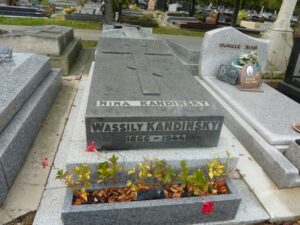
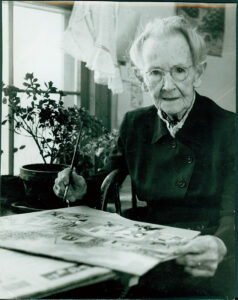 On this day in 1961 folk artist Grandma Moses died at the Health Center in Hoosick Falls, New York, aged 101. Born Anna Mary Robertson in Greenwich, New York on September 7, 1860.
On this day in 1961 folk artist Grandma Moses died at the Health Center in Hoosick Falls, New York, aged 101. Born Anna Mary Robertson in Greenwich, New York on September 7, 1860.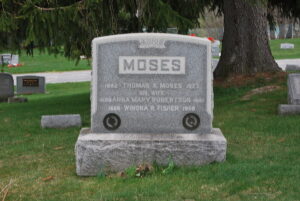
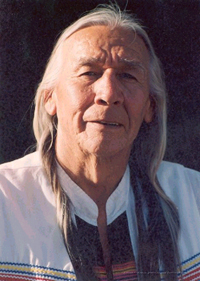 On this day in 2007, Sioux musician, political activist, and actor, Kanghi Duta (Red Crow in Dakota), Floyd Westerman died from complications of leukemia at Cedars-Sinai Medical Center in Los Angeles with his family, at the age of 71. Born on August 17, 1936 on the Lake Traverse Indian Reservation, home of the Sisseton Wahpeton Oyate, one of the tribes of the Eastern Dakota subgroup of the Great Sioux Nation, living within South Dakota. After establishing a career as a country music singer, he became a leading actor depicting Native Americans in American films and television. He worked as a political activist for Native American causes.
On this day in 2007, Sioux musician, political activist, and actor, Kanghi Duta (Red Crow in Dakota), Floyd Westerman died from complications of leukemia at Cedars-Sinai Medical Center in Los Angeles with his family, at the age of 71. Born on August 17, 1936 on the Lake Traverse Indian Reservation, home of the Sisseton Wahpeton Oyate, one of the tribes of the Eastern Dakota subgroup of the Great Sioux Nation, living within South Dakota. After establishing a career as a country music singer, he became a leading actor depicting Native Americans in American films and television. He worked as a political activist for Native American causes.